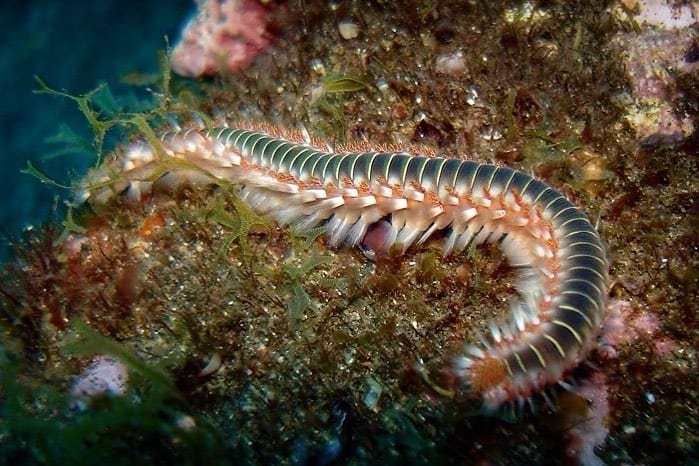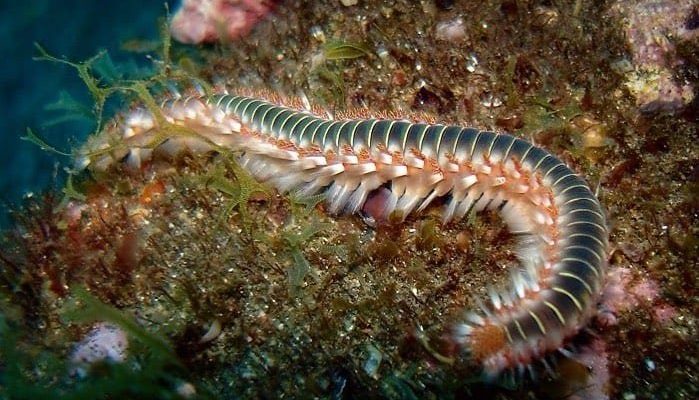
So, what causes these critical declines? You might be wondering why an organism as small as a bristle worm can have such a massive impact. Think of them as unsung heroes of the ocean floor—cleaning up debris, aerating sediments, and serving as food for fish and other marine animals. When they start disappearing, something must be wrong. In this post, we’ll dive into the various reasons behind these population crashes and the broader implications for marine ecosystems.
What Are Bristle Worms Anyway?
Bristle worms are part of the *Annelida* phylum, which means they’re segmented worms, and the *Polychaeta* class, making them different from earthworms you might find in your backyard. They come in a range of colors and sizes, with some species reaching over a foot long! Their bristles, or *chaetae*, are used for movement and can also be a defense mechanism.
You’ll find them in various marine environments, from coral reefs to deep-sea habitats. Their primary role is to break down organic matter, contributing to nutrient cycling in the ecosystem. Without them, detritus would pile up, creating problems for other marine life. Their presence is not just a sign of a healthy environment; it’s crucial for keeping the ocean’s ecosystem in balance.
Common Causes of Population Crashes
So, what leads to a sudden drop in bristle worm populations? The reasons can be complex and multifaceted. Here are some key factors to consider:
- Pollution: Chemical runoff from agriculture and urban areas can introduce toxins into marine environments, harming bristle worms and other marine life.
- Temperature Changes: With climate change, rising ocean temperatures can disrupt the habitats where these worms thrive.
- Overfishing: Removing large fish that prey on bristle worms can lead to imbalances, making their populations susceptible to crashes.
Each of these factors can create a chain reaction that negatively impacts bristle worm populations. Think of it like a game of Jenga; remove the wrong piece, and the entire structure can collapse.
The Impact of Habitat Destruction
Habitat destruction is another significant player in the decline of bristle worm populations. Whether due to coastal development, dredging, or pollution, these activities can devastate their habitats. Coral reefs, seagrass beds, and other vital ecosystems serve as homes and breeding grounds for bristle worms, and when these environments suffer, so do the worms.
You might picture a bustling bristle worm community thriving in a coral reef, but when those reefs are damaged, it’s like tearing down their entire neighborhood. Without proper shelter and resources, their populations can dwindle rapidly, affecting the balance of the entire ecosystem.
How Climate Change Plays a Role
Climate change isn’t just a buzzword; it profoundly affects marine life, including bristle worms. Rising sea temperatures can alter their breeding and feeding patterns, making it harder for them to survive. Moreover, ocean acidification, which results from increased CO2 levels, can impact their ability to build protective structures.
For instance, imagine trying to build a sandcastle in water that keeps washing away your sand. That’s the challenge bristle worms face with changing ocean conditions. Adaptation becomes crucial, but rapid changes might outstrip their ability to cope, leading to population crashes.
The Role of Invasive Species
Invasive species are like the uninvited guests that crash a party and disrupt everything. They often compete for food and space, making it hard for native species, including bristle worms, to thrive. For example, invasive fish or invertebrates can prey on bristle worms or consume the food resources they rely on, pushing their populations further down.
Just as a single weed can take over a garden, one invasive species can alter the entire dynamic of a marine ecosystem. This not only threatens bristle worms but also the myriad of species that depend on them.
What Happens When Bristle Worms Disappear?
When bristle worms crash in numbers, it’s not just about losing a single species. Their decline can ripple through the entire marine ecosystem. Since they serve as food for various fish and other predatory species, a decrease in their numbers can lead to a decline in those predators, too.
Moreover, without bristle worms to break down organic matter, nutrient cycling slows, which can degrade overall water quality and contribute to further ecological imbalances. It’s a classic case of “a chain is only as strong as its weakest link.” When one link—like the bristle worm—is compromised, the entire chain starts to falter.
Conservation Efforts and Solutions
Addressing bristle worm population crashes requires a coordinated effort. Conservationists focus on habitat restoration, pollution control, and sustainable fishing practices. Initiatives to clean up coastal waters and protect critical habitats can help restore balance.
For example, programs that aim to reduce runoff from farms can significantly improve water quality, supporting not just bristle worms but the entire marine ecosystem. These efforts remind us how interconnected our world is; taking care of one part helps the whole system thrive.
What Can You Do to Help?
You don’t have to be a marine biologist to contribute to the health of bristle worms and their ecosystems. Here are some easy steps you can take:
- Reduce Plastic Use: Avoid single-use plastics that can end up in the ocean.
- Participate in Clean-up Events: Join local beach clean-ups to help reduce pollution.
- Support Sustainable Seafood: Choose seafood that is caught in environmentally-friendly ways.
Every small action can add up to make a big difference in preserving the delicate balance in our oceans.
In conclusion, bristle worms may be small, but their role in the marine ecosystem is anything but insignificant. Understanding the reasons behind their population crashes can help us appreciate their value and motivate us to take action. Remember, a healthy ocean benefits everyone, not just those of us who live near the coast. Let’s work together to ensure that these resilient little creatures continue to thrive for generations to come.

